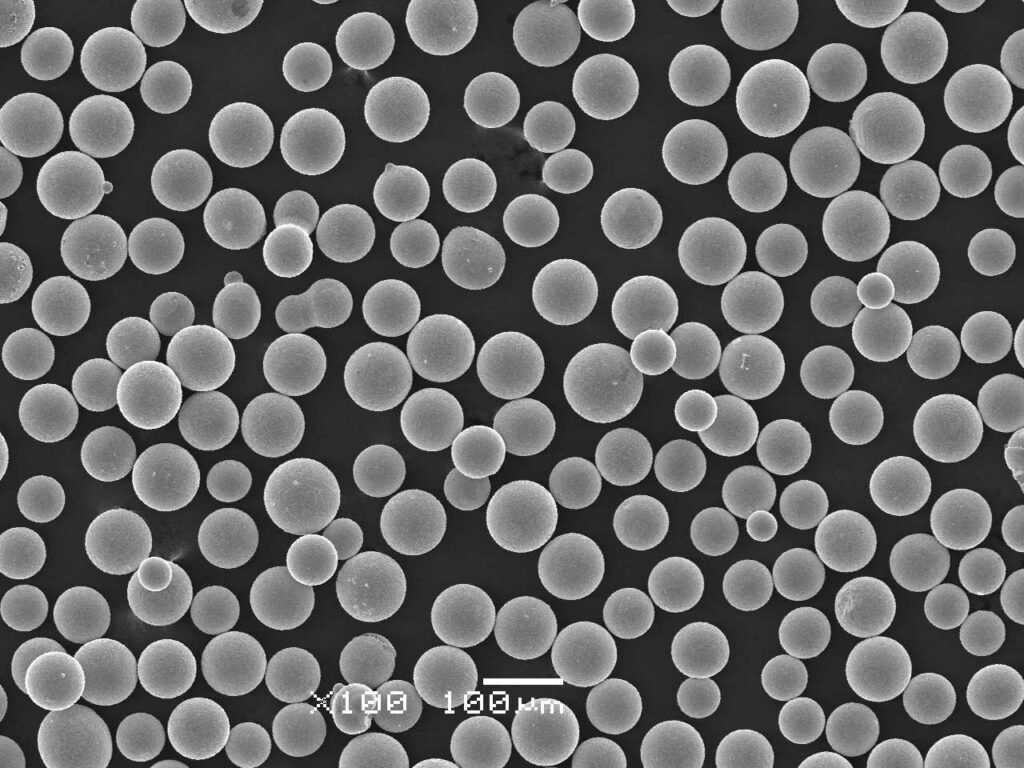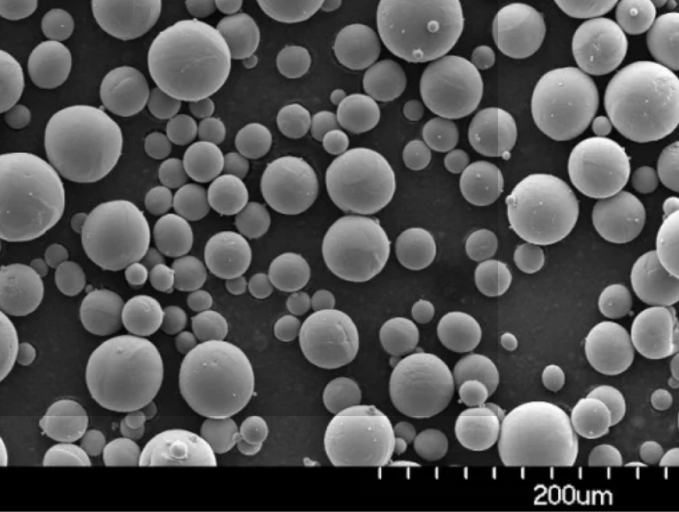1. Introduction
In recent years, the world of manufacturing has witnessed a groundbreaking technology that is reshaping the way we create objects and revolutionizing the production process. This innovative technology is 3D printing, also known as additive manufacturing. With 3D printing, complex and intricate designs can be turned into physical objects with precision and efficiency. One of the most fascinating aspects of this technology is the ability to 3D print alloys, which are materials composed of a mixture of two or more metals.
2. What is 3D Printing?
Before delving into the world of 3D printed alloys, it is essential to understand the fundamentals of 3D printing itself. 3D printing is a manufacturing technique that builds objects layer by layer, using a digital design file as a blueprint. It involves the deposition of materials, such as plastics, metals, or ceramics, in a controlled manner to create the desired object. This process is in stark contrast to traditional subtractive manufacturing methods, where material is removed from a larger block to shape the final product.

3. The Rise of 3D Printed Alloys
In recent years, 3D printing has evolved rapidly, enabling the use of advanced materials like alloys. Alloys offer enhanced properties compared to pure metals, such as improved strength, durability, and resistance to corrosion. The combination of 3D printing technology with alloys has unlocked new possibilities in various industries, pushing the boundaries of design and manufacturing.
4. Advantages of 3D Printed Alloys
4.1 Design Flexibility
One of the key advantages of 3D printed alloys is the unparalleled design flexibility they offer. Traditional manufacturing techniques often impose limitations on design due to constraints in tooling and machining processes. With 3D printing, complex geometries and intricate designs can be realized without the need for additional tooling. This enables engineers and designers to create highly customized and optimized products, pushing the boundaries of what was previously possible.
4.2 Lightweight and Strong Structures
3D printed alloys possess excellent mechanical properties, making them ideal for lightweight yet strong structures. These alloys can be engineered to have specific characteristics, such as high strength-to-weight ratio, which is crucial in industries like aerospace and automotive. By reducing the weight of components, fuel efficiency can be improved, leading to cost savings and reduced environmental impact.
4.3 Cost-Effective Manufacturing
Another significant advantage of 3D printed alloys is cost-effective manufacturing. While traditional manufacturing methods often require complex tooling and expensive molds, 3D printing eliminates the need for these upfront costs. With 3D printing, the production process can be streamlined, reducing material waste and labor costs. Additionally, the ability to consolidate multiple components into a single 3D printed part can further optimize production efficiency and reduce assembly time.
4.4 Customization and Personalization
3D printed alloys allow for unparalleled customization and personalization. Each object can be tailored to meet specific requirements, whether it’s a unique medical implant or a customized piece of jewelry. This level of customization not only enhances the functionality of the final product but also provides a personalized experience for the end-user.
4.5 Reduced Waste and Environmental Impact
Sustainability is a growing concern in the manufacturing industry. 3D printed alloys contribute to reducing waste and minimizing environmental impact. Unlike traditional manufacturing methods, where significant amounts of material are often wasted during the machining process, 3D printing adds material only where it is needed, minimizing waste generation. Additionally, the ability to recycle and reuse the leftover alloy powder further reduces the environmental footprint.

5. Types of 3D Printed Alloys
There are various types of alloys that can be 3D printed, each with its unique properties and applications. Let’s explore some of the commonly used ones:
5.1 Titanium Alloys
Titanium alloys are widely utilized in aerospace, medical, and automotive industries due to their excellent strength-to-weight ratio, corrosion resistance, and biocompatibility. 3D printed titanium alloys offer the ability to create complex and lightweight components for critical applications.
5.2 Aluminum Alloys
Aluminum alloys are renowned for their lightweight nature and high strength. By 3D printing aluminum alloys, manufacturers can produce intricate parts with reduced weight, making them suitable for aerospace, automotive, and consumer electronics industries.
5.3 Stainless Steel Alloys
Stainless steel alloys are known for their exceptional strength, corrosion resistance, and heat resistance. 3D printing stainless steel alloys allows for the creation of complex and durable parts, making them ideal for applications in the automotive, aerospace, and medical fields.
5.4 Nickel-Based Alloys
Nickel-based alloys exhibit excellent high-temperature strength, corrosion resistance, and wear resistance. These alloys are commonly used in the aerospace, energy, and chemical industries. With 3D printing, intricate designs and complex geometries can be achieved, enhancing the performance of components in demanding environments.

6. Applications of 3D Printed Alloys
The versatility of 3D printed alloys opens up a wide range of applications across various industries. Let’s explore some of the key sectors where 3D printed alloys have made a significant impact:
6.1 Aerospace Industry
The aerospace industry has embraced 3D printed alloys for the production of lightweight yet robust components. From aircraft engine parts to structural components, 3D printed alloys offer improved performance, reduced weight, and increased fuel efficiency.
6.2 Automotive Industry
In the automotive industry, 3D printed alloys are used to create intricate designs, lightweight components, and customized parts. This technology enables the production of complex geometries, reducing the weight of vehicles and enhancing their overall performance.
6.3 Medical and Dental Field
3D printed alloys have revolutionized the medical and dental field by enabling the production of patient-specific implants, prosthetics, and surgical instruments. Customized implants can be tailored to fit an individual’s unique anatomy, improving patient outcomes and reducing surgical complications.
6.4 Jewelry and Fashion Industry
The jewelry and fashion industry has also embraced 3Dprinted alloys for creating intricate and unique designs. With 3D printing, jewelry designers can push the boundaries of creativity, producing complex geometries and personalized pieces. The use of 3D printed alloys in fashion accessories allows for lightweight and durable designs that are both visually stunning and functional.
6.5 Engineering and Manufacturing
3D printed alloys have found extensive applications in engineering and manufacturing sectors. From tooling and prototypes to functional end-use parts, 3D printing offers a cost-effective and efficient solution. The ability to create complex shapes and optimize designs with 3D printed alloys enhances productivity and accelerates the development cycle.

7. Challenges and Limitations
While 3D printed alloys offer numerous advantages, there are also some challenges and limitations that need to be addressed:
7.1 Quality Control
Ensuring consistent quality and reliability in 3D printed alloys can be challenging. The manufacturing process needs to be carefully monitored and controlled to avoid defects and material inconsistencies. Quality control measures, such as non-destructive testing and inspection techniques, play a crucial role in maintaining the integrity of 3D printed alloy components.
7.2 Material Availability
The availability of 3D printable alloys can be a limitation, especially for niche or specialized alloys. Although the range of available materials is expanding, certain alloys may have limited options or higher costs, which can impact the feasibility of using 3D printed alloys for specific applications.
7.3 Post-Processing and Finishing
After the 3D printing process, post-processing and finishing are often required to achieve the desired surface finish, dimensional accuracy, and mechanical properties. Post-processing techniques, such as heat treatment, machining, and polishing, may be necessary to meet the required specifications, adding additional time and cost to the production process.
7.4 Regulatory Concerns
The use of 3D printed alloys in critical applications, such as aerospace and medical fields, may raise regulatory concerns. Ensuring compliance with industry standards and regulations is vital to guarantee the safety and reliability of 3D printed alloy components.

8. Future Trends and Developments
The field of 3D printed alloys continues to evolve, and several exciting developments are on the horizon:
- Advancements in alloy formulations: Researchers are continuously exploring new alloy compositions and formulations to enhance the properties and performance of 3D printed alloys, opening up new possibilities for applications in various industries.
- Improved process optimization: Efforts are underway to optimize the 3D printing process further, reducing production time, improving dimensional accuracy, and enhancing overall efficiency.
- Integration of multi-material printing: The ability to 3D print with multiple materials simultaneously is gaining traction. This advancement enables the creation of hybrid structures and functional integration, expanding the capabilities of 3D printed alloys.
- Enhanced post-processing techniques: Innovations in post-processing and finishing techniques aim to streamline and automate the finalization of 3D printed alloy parts, reducing manual labor and improving overall productivity.
9. Conclusion
3D printed alloys have emerged as a game-changer in the manufacturing industry, unlocking new possibilities in design, customization, and performance. With their unique combination of strength, durability, and design flexibility, 3D printed alloys are reshaping various sectors, from aerospace and automotive to healthcare and fashion. While challenges and limitations exist, ongoing advancements and research in the field of 3D printing are poised to overcome these hurdles, paving the way for a future where 3D printed alloys become even more prevalent and transformative.
FAQs
1. Is 3D printing limited to metals? No, 3D printing can be done using various materials, including plastics, ceramics, and metals. However, the focus of this article is on 3D printed alloys.
2. Are 3D printed alloys stronger than traditional alloys?
Yes, 3D printed alloys can exhibit comparable or even superior strength to traditional alloys. The additive manufacturing process allows for precise control over the material composition and internal structure of the printed part, resulting in optimized mechanical properties. This level of control enables the production of complex geometries and internal lattice structures that can enhance the strength-to-weight ratio and overall performance of the printed alloys.
3. Can 3D printed alloys be recycled?
Yes, 3D printed alloys can be recycled. Unused or excess alloy powder from the printing process can be collected, sieved, and reused in subsequent prints, minimizing waste. Additionally, post-processing techniques such as powder bed fusion and binder jetting can recover and recycle the leftover alloy powder for future use. Recycling 3D printed alloys contributes to sustainable manufacturing practices and reduces material waste.
4. Are there any size limitations for 3D printed alloy parts?
While 3D printing technology has evolved to accommodate larger build volumes, there may still be size limitations for 3D printed alloy parts. The size of the printer, the available printing materials, and the structural integrity of the part can impact the maximum size achievable. However, advancements in 3D printing technology continue to push the boundaries, allowing for the production of increasingly larger and more complex alloy parts.
5. How does the cost of 3D printed alloys compare to traditional manufacturing methods?
The cost of 3D printed alloys can vary depending on factors such as the complexity of the design, the type of alloy used, and the scale of production. In some cases, 3D printing can offer cost savings compared to traditional manufacturing methods, particularly for low-volume or customized production. However, for high-volume production, traditional manufacturing methods may still be more cost-effective due to economies of scale. It is essential to conduct a thorough cost analysis to determine the most suitable manufacturing approach for a specific application.

